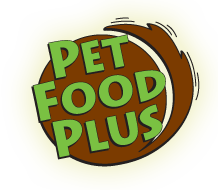Quality Kibble: How To Choose A Good Dog Food
A good rule of thumb in considering the best dog food is to look for a pet food brand that's transparent about their products.
Pet food labels can be surprisingly misleading and with no universal regulations requiring clearer labeling, it's up to you to look beyond the packaging and make informed choices about what goes into your dog's bowl.
Check the Ingredient Panel: Ingredients are listed in descending order by weight, so the first five ingredients tell you a lot about food quality. Dogs are omnivores and benefit from both animal and plant-based nutrients. However, meat should make up the majority of their diet to meet their protein needs. The first ingredient should be a named meat (like chicken, beef, lamb or salmon).
- Look for: A majority of the first 3-5 ingredients being protein sources (whole meats, meat meals, or organ meats). Whole food ingredients you recognize, such as sweet potatoes, blueberries, or brown rice.
- Watch out for: More than half of the first 5 ingredients being grains. Low-grade fillers like corn, wheat, and soy. Unidentified by-products like "meat meal" or "bone meal". Unnamed meats (e.g., "poultry" instead of "chicken"). Sweeteners such as corn syrup. Ingredient splitting, when similar ingredients (e.g., peas, pea flour, pea starch) are listed separately to appear lower on the list. Together, they might outweigh the meat content.
Note on Limited Ingredient Diets: These may contain fewer protein sources but can still be high-quality, especially if the percentage of animal ingredients is clearly stated.
Look for Complete & Balanced Statement: Check that the food meets AAFCO nutritional standards for your dog's life stage. This ensures your dog receives all essential nutrients for overall health.
Avoid Artificial Additives: Skip foods with artificial preservatives (e.g.,BHA, Ethoxyquin), artificial colors, and flavors.
Choose Brands That Are Transparent: High-quality brands provide details about ingredient sourcing, manufacturing, and nutritional research to ensure safety and quality.
Need Help Choosing?: Ask us! We're happy to help you find the best food for your dog's health, lifestyle and taste preferences.
Extra Tips For Choosing & Storing Dog Food
Buy the Right Bag Size: Choose a bag size your dog can finish within 1 to1½ months. Kibble can become stale or even spoil if stored too long.
Keep Kibble in Its Original Bag: Don't dump kibble into a plastic bin. The original bag is designed to help preserve freshness and block out moisture and air. If you use a container, place the entire bag inside instead of pouring the food out.
Transition Food Gradually: Switching dog food suddenly can cause digestive upset. Gradually mix the new food into the old over 7-10 days. See our transition guide here.
Rotate Proteins or Brands: If your dog has a healthy gut and no sensitivities, rotating between different protein sources or formulas can help provide a broader nutrient profile.
Read the Feeding Guidelines, But Don't Follow Blindly: Use the label's feeding guide as a starting point, but adjust based on your dog's age, weight, activity level, and body condition.
If you're unsure where to start or want to upgrade your dog's current food, Pet Food Plus is here to help. Our knowledgeable team can walk you through options that fit your dog's unique needs-from life stage and activity level to food sensitivities and preferences.
Share this on Twitter | Share this on Facebook | Email to a friend.

